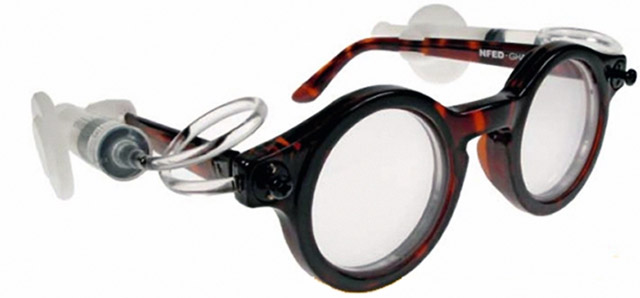
There are an estimated 1 billion people in the world who would benefit from vision enhancing glasses, and with the large majority being in the developing world, the figures seem insurmountable.
In the poorest parts of the world even those who work earn less than $1 a day, and with education struggling to keep up with demand optometrists are outnumbered by patients by about 1 million to one – making glasses nothing more than an impossible luxury.
With that in mind, it is clear that the only possible fix is one which does not rely on professional aid at all. Josh Silver, a professor of physics at Oxford University, has just that vision, and he is well on his way to making it a reality.
Liquid glasses
Silver referred to the idea of self-adjustable glasses as a ‘tremendous glimpse of the obvious’, and the glasses function on the simple principal that, generally, the fatter the lens the more powerful the prescription. To this end, the glasses come equipped with plastic lenses which house small liquid sacs connected to syringes on the arms of the frame.
By operating these syringes with a small dial, the wearer can control how much the sacs fill up and thereby how powerful their prescription is in a similar manner to how the muscles of our eye naturally control the lens. The tubes can then be locked in place until they next need to be adjusted, and the method has already made it apparently clear how easy it can be to achieve the right power in lenses using such a simple system.
Uses of such a device
Uses of affordable, self-adjustable eyeglasses are many. Literacy rates will improve dramatically, and a whole host of professions such as fishing, weaving and tailoring will provide a much better quality of life.
Not least, people will be happier. “People put them on, and smile”.
Future development
Silver is confident in his product and as such he has set himself some ambitious goals. By 2020, he plans to have distributed 1 billion pairs of spectacles to some of the poorest parts of the world, and it’s certainly not finding potential customers that’s the problem.
The target cost is a mere $1, but this still requires staggering money to produce even with no profit being taken. Right now, the plan is to work on minimising production costs whilst also looking into making the glasses thinner and more appealing to hit the target of 100 million pairs a year.
In the long term, this could mean great things. Not only will it serve to change the lives of millions, but from a business point of view making these people more independent can result in more customers and more opportunities for employment, and these are all things which we drastically need right now.
Rob writes for varifocal lenses specialists Direct Sight.










Comments